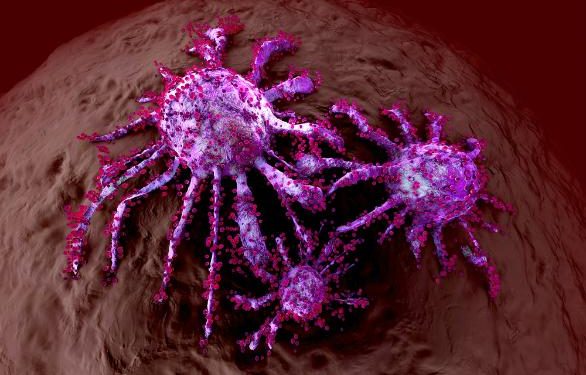Non small cell lung cancer is the most common type of lung cancer and it may spread to other parts of the body. It can affect people of all ages and sexes.
Getting diagnosed with lung cancer is a scary and stressful time. You may have many questions. This guide will help you understand your treatment options.
Treatment
A lung cancer diagnosis can be a shock. But there are many treatment options. The type of treatment you receive depends on what kind of non-small cell lung cancer (NSCLC) you have, its stage, and whether it has spread to other parts of the body.
NSCLC is the most common type of cancer in adults, accounting for 85 out of every 100 cases. It starts when cells that line the lungs become abnormal and grow quickly, forming a mass called a tumor.
If you have early-stage NSCLC that is confined to one area of the lung, surgery may be an option. We may also recommend radiotherapy to destroy cancerous cells that remain after surgery.
We can also recommend chemotherapy or biological therapy, which are medicines that control the growth of cancerous cells. We can combine these medicines with radiation or immunotherapy for a more effective combination of treatments.
Immunotherapy uses medicines to boost or direct your body’s natural defenses against cancer. For example, tremelimumab works by blocking CTLA-4, a protein that prevents your immune system from killing cancer cells.
Like many cancers, lung cancer can sometimes spread to other parts of your body, such as bones, brain, liver, skin, and lymph nodes. If it does, the new cancer is considered metastatic NSCLC.
There are many things that increase your chance of developing cancer, called risk factors. These include smoking cigarettes, pipes, or cigars, now or in the past; being exposed to asbestos, chromium, nickel, soot, arsenic, and beryllium in the workplace; and having certain genetic mutations (changes). But having a risk factor doesn’t mean you will get cancer; it only means that you are at increased risk.
Chemotherapy
The chemotherapy drugs used in non small cell lung cancer treatment kill cancer cells or stop them from growing. When chemotherapy is taken by mouth or injected into a vein or muscle, the drugs enter your bloodstream and can reach cancer cells throughout your body (systemic therapy). When the drugs are placed directly into an organ or body cavity, they mainly affect cancer cells in those areas (regional chemotherapy).
Nonsmall cell lung cancer often occurs when epithelial cells that line the inside of your lungs grow quickly and develop abnormally. These cells can form a mass or tumor and may spread to other parts of your body, such as the lining of the heart, bones, liver, and kidneys.
Your doctor will use laboratory tests to help diagnose nonsmall cell lung cancer and find out how far the cancer has spread. These include a chest x-ray, which takes pictures of your lungs; a CT scan, which makes detailed 3D images of the inside of your body; a biopsy, where a sample of your tumor or tissue is removed; sputum cytology, to test a sample of mucus coughed up from your lungs; and thoracentesis, where fluid in the space between the lining of your chest and lung is removed with a needle for testing.
If the cancer is found in only 1 lung and it hasn’t spread to other parts of your body, you can have surgery to remove it. You’ll probably also have a course of chemotherapy after surgery to destroy any remaining cancer cells. If your cancer has spread and you’re not healthy enough for surgery, you might have a combination of radiation and chemotherapy.
Targeted therapy
The drugs in targeted therapy target specific genes or proteins that are important for cancer cell growth. These drugs block the activity of these proteins and stop the cells from growing. They are used in addition to other treatment options, such as chemotherapy and radiation. Targeted therapies may be given in pill form that you swallow (orally) or through a tube into a vein in your chest (intravenously).
NSCLC is the most common type of cancer and accounts for about 85% of all cancer cases in the United States. It usually starts in the lungs but can spread to other parts of the body. The lungs are two cone-shaped organs in the chest that bring oxygen into the body and release carbon dioxide, a waste product, as you breathe. The lungs have several sections called lobes, and tubes called bronchi lead from the trachea to the left and right lung.
Lung cancer can also start in the lining of the lungs or in fluid around the lungs. It can spread to lymph nodes in the lungs or to other parts of the body, including the brain and liver.
The five-year survival rate for people with early-stage NSCLC is 63%. It is lower for people with advanced-stage NSCLC, which means that the cancer has spread more widely.
Researchers are developing new types of targeted therapy to help improve survival for people with NSCLC. These therapies are being tested in clinical trials. This PDQ cancer information summary was written by NCI staff. It is based on research that is published in medical journals and is reviewed regularly to update the information. The PDQ cancer information summaries are produced by the National Cancer Institute (NCI) and are available at the U.S. National Institutes of Health website.
Surgery
Non-small cell lung cancer (NSCLC) is the most common type of cancer. It starts when the cells that make up the lining of your lungs become abnormal and grow very quickly, forming a mass called a tumor. There are 2 main subtypes of NSCLC: adenocarcinoma and squamous cell carcinoma. At MSK, we have experts who are specially trained in classifying (describing) these different subtypes of NSCLC and know how to match them to the best types of surgery.
If your cancer is in only 1 part of your lungs and you’re in good general health, we may recommend surgery. This is usually followed by a course of chemotherapy to destroy any cancer cells that remain.
Surgery for early-stage NSCLC involves making a cut (incision) in your chest or side and removing a section or whole lung. We may also remove nearby lymph nodes if we think your cancer has spread to them.
A less invasive operation is a wedge resection or segmentectomy, where we remove just a small piece of your lung. This is only suitable for a small number of patients, but it can be used if we are sure the cancer is very early-stage and limited to just 1 part of your lung. This is usually combined with a course of radiotherapy and chemotherapy.
If the cancer has already spread to other parts of your body, we cannot remove it surgically. But there are other treatments that we can use to control the cancer, such as chemotherapy and targeted therapy. And there are new types of treatment being tested in clinical trials. We will talk about the different options with you.
Clinical trials
Taking part in a clinical trial gives you access to experimental treatments that may be more effective than standard therapies. These trials are carefully monitored scientific research studies that test whether new medical approaches, such as drugs or radiotherapy, work in people with a particular disease. Clinical trials can also help researchers learn more about how to prevent, detect, diagnose, or treat a disease.
Lung cancer clinical trials are investigating several approaches to improve the survival of people with lung cancer, including immunotherapy, targeted therapy, and other therapies. One experimental therapy under study is a vaccine that prompts the body to make immune cells to recognise and attack tumours. Another is a combination of chemotherapy and immunotherapy that targets the tumour’s DNA.
The ALCHEMIST trial is examining whether giving the targeted therapy capmatinib and the immunotherapy pembrolizumab together can improve survival in people with advanced non-small cell lung cancer. This is a phase III trial that will compare the experimental regimen with standard chemotherapy. The study will be stopped when the experimental therapy is no longer better than the standard treatment.
Other trials are looking at using radiation to shrink the tumour before surgery or after other treatments and at different combinations of treatments. For example, researchers are testing whether combining the drug ramucirumab with radiation to the chest or abdomen can decrease the size of the tumour and the risk that it will come back after treatment.
NCI is working to speed up the development of new treatments for small-cell lung cancer by bringing scientists together to share ideas and expertise. It is doing this through the Lung MAP (Lung Multicenter Array Platform for Discovery) consortiumExit Disclaimer and through eight lung cancer Specialized Programs of Research Excellence (SPORE). Each of these programs funds multiple projects that aim to quickly translate laboratory discoveries into new clinical treatments.









